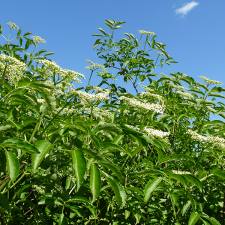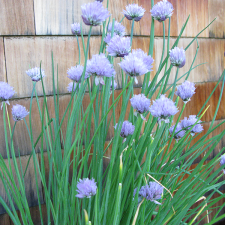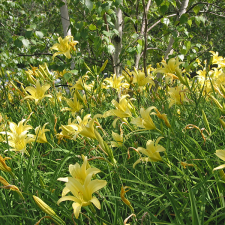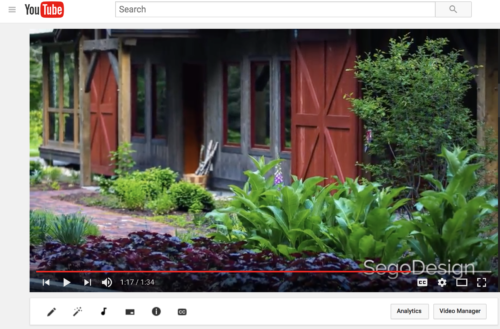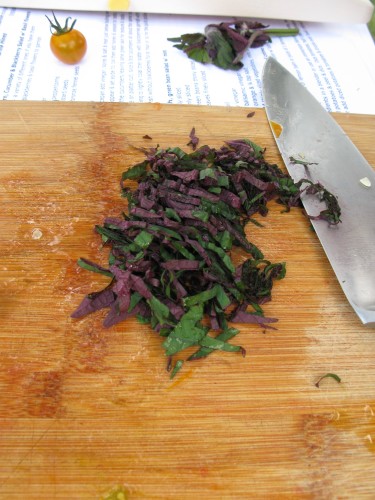TOP 10 edible plants for New England Gardens
My favorite edible plants to add for easy to grow eatability (right off the plant with minimal kitchen prep) and year-round interest. This is a broad-strokes compilation: I’ve listed genera, not individual varieties or cultivars. Not all are native, but all are flavorful and have multi-seasonal aspects to grace the garden.
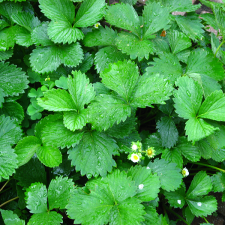 Fragaria spp. • Strawberry
Excellent eating, great ground cover, kids love them. Best in sun and maybe interwoven with other plants, like spinach or another annual crop. Spread indefinitely with runners and should be rejuvenated every 2 years by cutting out older plants and re-spacing. Most are self-pollinating. Alpine and wild strawberries are smaller, sweeter, and less productive. Cultivated ones are bigger and produce more, but may need to be rotated for disease resistance.
Fragaria spp. • Strawberry
Excellent eating, great ground cover, kids love them. Best in sun and maybe interwoven with other plants, like spinach or another annual crop. Spread indefinitely with runners and should be rejuvenated every 2 years by cutting out older plants and re-spacing. Most are self-pollinating. Alpine and wild strawberries are smaller, sweeter, and less productive. Cultivated ones are bigger and produce more, but may need to be rotated for disease resistance.
Amelanchier spp. • Juneberry Underutilized and delicious natives from 6’-50’. These sub-canopy or canopy, graceful, multi- or single-stemmed trees have early spring blooms and often great fall color. The berries are similar to blueberries but have a more almond-y taste, on a plant that is more hardy and adaptable than a blueberry. Despite disease problems like Fireblight (rose family), under extreme stress, Juneberry is worth incorporating in even small gardens; all are self-pollinating. ‘Robin Hill’ has pink flowers in spring.
Sambucus canadensis • Elderberry Marvelous multipurpose tall shrubs, with edible fruits for juice, jam, fantastic health-packed beverages, and soothing tea from flowers. Widely used for medicinal purposes, probably partly because of high vitamin C. Serves as an important early-season nectar source for specialist beneficial insects and is low-maintenance, widely adaptable, and can thrive in wet areas where most fruits cannot. Great in thickets for bird cover. ‘Yates’ has superior fruit. Requires a pollinator (plant 2 or 3).
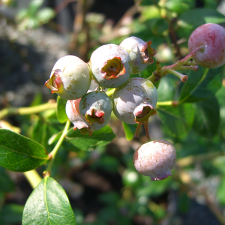 Vaccinium corymbosum • Blueberry
Once established, low-maintenance and long-lived shrubs. Needs strongly acid soils (pH 4-5), regular and plentiful water, and good drainage. Half-high varieties are hardier and tastier. Spring growth is bronzy with a metallic tint, later come pink bell-shaped flowers and glossy green foliage throughout summer. Fall color is a flush of hot oranges, yellows, and reds followed by warm red stems in winter on highbush types.
Vaccinium corymbosum • Blueberry
Once established, low-maintenance and long-lived shrubs. Needs strongly acid soils (pH 4-5), regular and plentiful water, and good drainage. Half-high varieties are hardier and tastier. Spring growth is bronzy with a metallic tint, later come pink bell-shaped flowers and glossy green foliage throughout summer. Fall color is a flush of hot oranges, yellows, and reds followed by warm red stems in winter on highbush types.
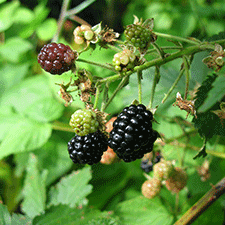
Rubus spp. • Brambles Best suited for pockets of monoculture production in sun, as a barrier or thicket. Cleavers or Sweet woodruff do well underneath. Require annual pruning to control vigorous expansion and for best yields. All are self-pollinating. Blackberries are not good neighbors in a forest garden (as they take over). But other brambles, like raspberries, are a wonderful thing to have for smoothies and your morning cereal. If you have room for a row 20’ or so, you will have enough to make jams and to share.
Allium schoenoprasum • Chives Eat greens, flowers, and bulbs. Act as ‘aromatic pest confusers’ when scattered around the garden, and flowering ones are a good generalist nectary source. Chives have a Lollipop flower and make a fantastic ‘skirt’ for under other herb plants or perennials. They can withstand neglect but prefer rich soil and steady irrigation. Can thrive with some care in walls, flagstone, or in pottery. Garlic chives are white, have flatter leaves, more upright and regal, not as mounding or dense, but have nice flavor.
Allium tricoccum • Ramps Naturalize to form large colonies in shade, and are uniquely suited to forest gardens. Native wild edible, growing as a spring ephemeral (emerge briefly and disappear by the time tree leafs out) in moist, deciduous woods with deep, humusy soil. Interplant with something to take up space when they die back (like wild ginger). Truly excellent food, rich in Vitamins A and C and minerals, that will grow in full shade. Great in spring salads or soups and quiche. Starry umbels of pure white, great in salads.
Hemerocallis spp. • Daylily Handles a wide range of soils and neglect; tolerates full and partial sun and very dry soils. Prolific bloomer, with edible buds and petals of just-opened flowers. Try petals in salads, egg dishes or soups, batter and fry whole closed flower buds, or dry buds and petals for use in place of saffron for color.
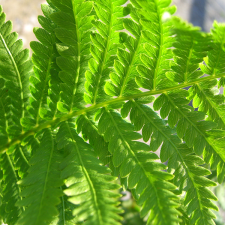 Matteuccia struthiopteris • Ostrich Fern
Attractively ornamental herbaceous perennial, with heights from 4’-6’. Grows in extensive colonies in moist soil and part to full shade. Take up to 1/3 of fiddleheads from each plant. Steam fiddleheads for 10 minutes, and serve with butter.
Matteuccia struthiopteris • Ostrich Fern
Attractively ornamental herbaceous perennial, with heights from 4’-6’. Grows in extensive colonies in moist soil and part to full shade. Take up to 1/3 of fiddleheads from each plant. Steam fiddleheads for 10 minutes, and serve with butter.
Vitis spp. • Grapes Improved varieties of native grapes (V. labrusca) have a great fruity flavor for jams and juice (these are all Concord-type grapes). Grow on west slope or an arbor for warmth in late summer when they need heat for fruit ripening. Grapes make delightful dappled shade. Fall leaves turn crystalline yellows, burnt orange and burgundy. ‘Concord’, ‘Golden Muscat’, ‘Niagara’ and ‘Interloken Seedless’ are great table and juicing grapes. Foliage is also edible.
Okay, just one more!
Nannyberry (Viburnum lentago) is a lesser-known native, but you can get them in the nursery trade now – St. Lawrence carries whips. A little rangy, but carry great fruit, considered the best of the Viburnums. Viburum trilobum is much more compact and neat, with great fall color, and nice leaf texture.

